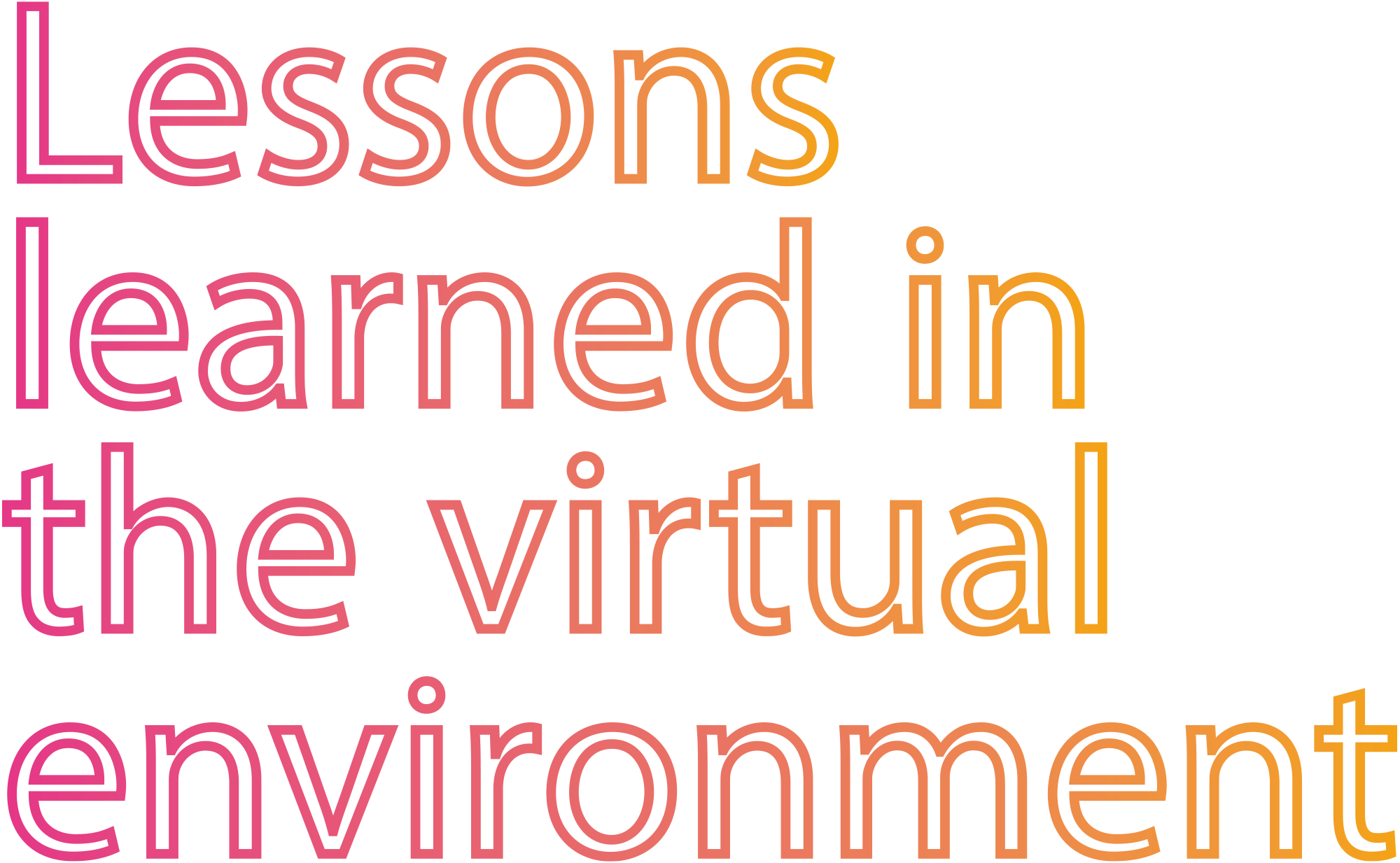the cte playbook:



 ow many children have immediate access to a 3-D printer? Or a spare car engine and the tools needed to restore it? How do courses in biomedical technology, engineering or robotics, which require significant work with resources and supplies that are not common household items, translate to an online setting?
ow many children have immediate access to a 3-D printer? Or a spare car engine and the tools needed to restore it? How do courses in biomedical technology, engineering or robotics, which require significant work with resources and supplies that are not common household items, translate to an online setting?
In some districts, the transition has gone better than could have perhaps been expected — though not without challenges.
“Sometimes I think it takes something significant to really shake things up,” said MJ Cooke, Anaheim Innovative Mentoring Experience program director for the Anaheim Union High School District. The program — a 2020 Golden Bell recipient — prepares students for college and career by providing mentoring opportunities across four tiers that include career exploration, guest speakers, field trips, a mentoring series and internships.
“We immediately shifted our career mentoring to virtual career mentoring and our internships to virtual internships, so our students were actually experiencing in real time that paradigm shift in workforce trends with more remote work and project-based work,” Cooke explained.
Still, due to the hands-on requirements of CTE, it cannot all be re-created online. That is why the district has been working to maintain as much hands-on time as possible, said Anaheim Union HSD Career Education program administrator Scott Reindl. High-powered laptops loaded with programs such as Photoshop and Adobe Premiere were purchased and distributed to students participating in media arts pathways; technology kits were ordered that would allow students to practice with programming concepts at home; art supplies were provided to those in visual performance arts; and culinary arts teachers put together baking kits for students.
director for the Anaheim Union High School District
A similar shift has been made over the years in Anaheim Union HSD, Reindl said. While traditional vocational-centered career pathways like construction are still a staple in its CTE offerings, more diverse pathways focused on cybersecurity, biotechnology, engineering and various health care options have been added. “From our board to our superintendent on down, career education is a huge priority,” Reindl said.
In a more typical year, Anaheim students participate in career exploration events that connect them to high-demand industries in their community. One-time, in-person events allow them to develop an understanding of these industries — from entry-level positions all the way through senior executive positions. For a deeper look, some industry partners provide career mentoring. Every fall, Kaiser Permanente hosts a four-session series that has proven especially beneficial for students exploring careers in the medical field in an academic setting. They get the chance to take what they’ve learned and apply it to a real-world setting and work with professionals in that industry, Cooke said, noting that many of the district’s industry partners were quick to offer support in adapting CTE to a virtual model when schools building were closed.
Yet, despite every effort to keep students motivated in their online courses, Reindl said the kids have Zoom fatigue just like everyone else. Additionally, while CTE teachers report that having the hands-on pieces have been helpful, they’ve experienced some of the same issues that other teachers have with a lack of engagement among students.
Teachers report more engagement and higher attendance when students have these hands-on projects to connect with, Schaffner explained, but it has been a challenge, nonetheless.
“One of the hardest things about the pandemic for me is to think about the students and what they’re missing out on, especially the kids that really need that routine and time at school — that is truly the tragic piece,” she said. “And I know that it’s a big word, but it does feel tragic for some kids. I think they’re disconnected. We’re losing them.”
It’s simply impossible to replicate something like welding or automotive work, for example, in a virtual setting, said Matthew Wells, director of the Mountain Desert Career Pathways Joint Power Authority. Right now, the main goal is to give students hope, and to build excitement around the fact that, when they are able to return to campus, what they are doing now will have prepared them to jump right into the hands-on work.
The Mountain Desert Economic Partnership, another 2020 Golden Bell recipient, is facilitated by Mountain Desert Career Pathways. This nine-district consortium, focused on aligning school programs to local industry needs, brings together industry, government, education and community partners to build a sustainable pipeline of high-quality, local employees to help meet the workforce needs in their own communities.
In a normal year, students gain technical industry standard skills in high school over a two-year course sequence and ideally feed from there into some form of post-secondary training or directly into the workforce. Students can also participate in job shadowing or regional competitions that allow them to show off the skills they’ve developed to local employers.
“There’s a predominant mindset with students that there’s just not a lot of opportunity in the area, which is definitely not true,” Wells said. “Everything we do is really trying to connect students to industry as a collaborative, regional approach and get students to understand what opportunities are out there that they don’t realize are in their backyard.”

In the shortterm, CTE students are significantly more likely than their peers to say that they developed problem-solving, project completion, research, math, college application, work-related, communication, time management and critical-thinking skills during high school. Research has also demonstrated long-term benefits to CTE participation. A 2016 report from University of Connecticut researcher Shaun Dougherty found that students with greater exposure to CTE are more likely to enroll in a two-year college, be employed and earn higher wages.
The goal of expanding awareness of local career opportunities and linking pathways to community need is key in other programs as well. Kathy Goodacre, executive director of the Sonoma-based CTE Foundation, said the nonprofit organization works collaboratively with local employers and other funders to incentivize Sonoma County schools to expand or enhance CTE programs that are in direct alignment and support of local workforce and economic development.
In addition to gaining skills specific to local industries, CTE encourages that creativity, collaboration, teamwork, communication and connection to peers, teachers and local businesses that are beneficial to students. And it’s that sense of connection that’s more important now than ever.
“What we hear from our students now is that they’re missing that connection. They’re really feeling the lack of the connection of their peers, their teachers and those other support structures,” said CTE Foundation Vice President of programs and operations, Amber Figueroa. “I think CTE as an educational strategy is designed to help foster connections on a lot of different levels, but can it be done well in distance learning? I think the jury is still out. They’re still trying to figure it out.”
The foundation worked with local business and industry partners to develop a video series that includes career interviews with various individuals, career panels, site tours and more. The goal was to take students all virtual, but still be able to take them onto a construction site or into a food and beverage manufacturing plant to see what’s happening and talk about the different careers in these pathways.
“You remember what it was like back in March [2020], we really had no idea what was in front of us, and a lot of people were scrambling,” Figueroa said. “We heard that students had completely dropped off the map, that they weren’t coming to classes, they weren’t showing up in the video calls or turning in any kinds of assignments. Those kits and other things were bringing students back into the classroom. They started turning in assignments. They started collaborating with their peers and re-engaging in their education.”
“What we’re finding is this hunger for engagement is so strong — not just for the students, but for our teachers who are desperate to find tools and something interesting and fun and different even in the core academic areas,” Goodacre said. “It’s an opportunity for us to expose and broaden this career-connected learning beyond CTE teachers, because any of this can be applicable in any class if the teacher is creative enough and innovative enough to create a project around it that applies in their English class, their math class or their engineering class.”
The CTE Foundation learned that far more students could participate in career exploration events held online than at individual school sites spread throughout Sonoma County. That is something that will continue, Figueroa said.
Cooke of Anaheim Union HSD said a silver lining of the pandemic was that it allowed the district to take CTE programs to scale through methods that reflected the ways in which remote work and technological advances were already changing the way many industries functioned prior to the spread of COVID-19.
Mountain Desert Career Pathways’ Wells agreed that in just trying to make the best of a bad situation, some lessons were learned that will ultimately make access to CTE more equitable. Since the high desert area covers a large geographical swath, offering online micro-internships and hosting virtual guest speakers and symposiums means students without reliable transportation or the ability to travel 45 minutes each way to an event or internship can now participate.
CTE Foundation
Figueroa said, to her, the most heartwarming stories surrounding CTE are those shared by students who found a path and a skill that made them feel seen — their interests were acknowledged by another adult in the community who then helped them connect that interest to a career. “A lot of the work that we do is really about opening up those doors of opportunity and allowing kids to explore and try new things until they go, ‘Oh, that’s it. That’s the one.’ And then we put them with an employer, and they get to hear, ‘You’re right, you’re perfect for this,’” she said.
“Before COVID, CTE has always been recognized for providing a place where some students find their sense of belonging,” Wells said. Students want to work on something of value and they want to feel like they have a place. Through CTE, students feel like they get to work on something that’s important to them and their community, and their desire to learn is amplified.
“I think the mental health benefits of students growing up and understanding, ‘I’ve got a really good direction and I’m going to be proud, my family’s going to be proud, my community’s going to be proud’ — those things are incredibly important, especially during this crazy crisis that we’re in and all the surrounding fear and concern,” Wells said. “So, I think it’s the right place to invest and the right place to put our hearts into building those career paths.”
Alisha Kirby is a staff writer for California Schools.